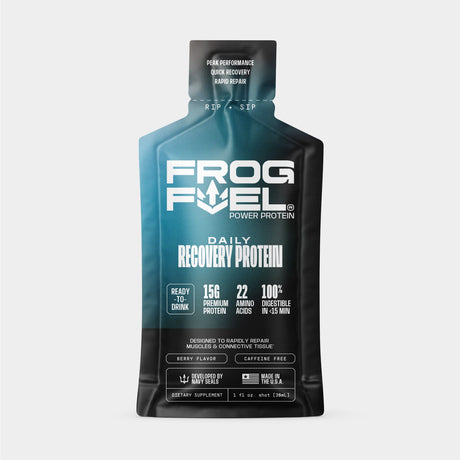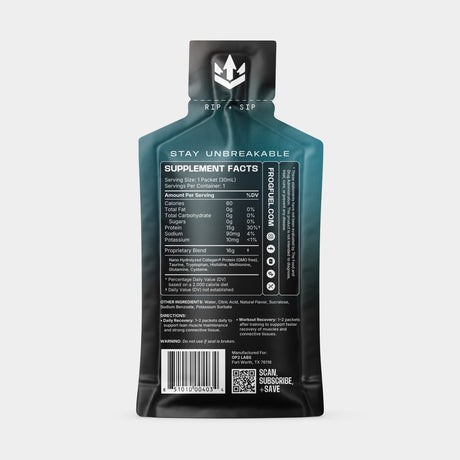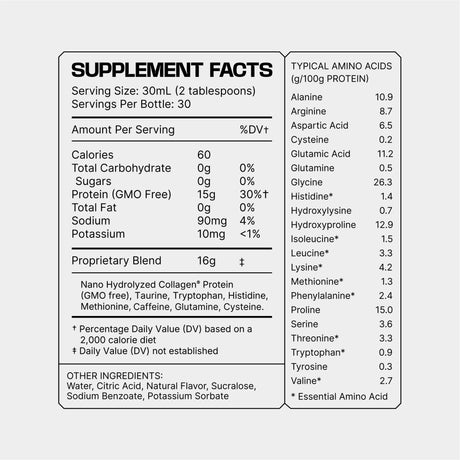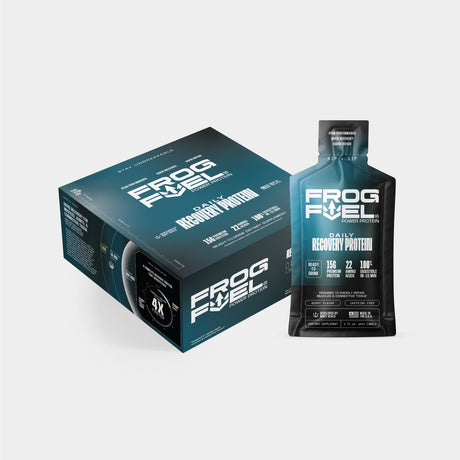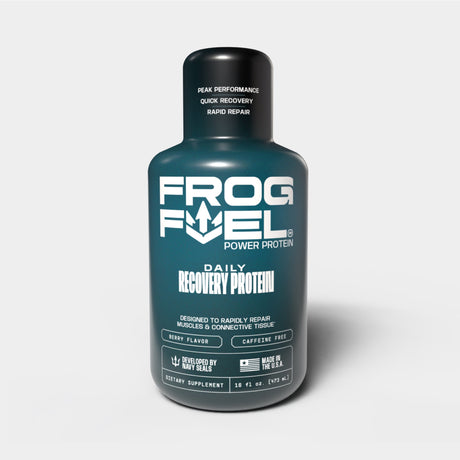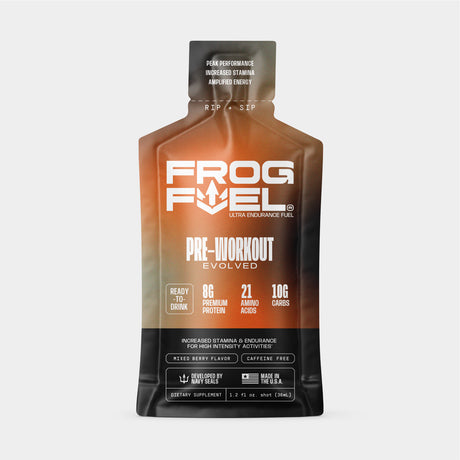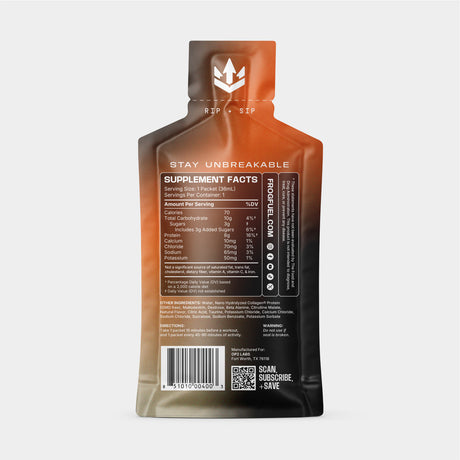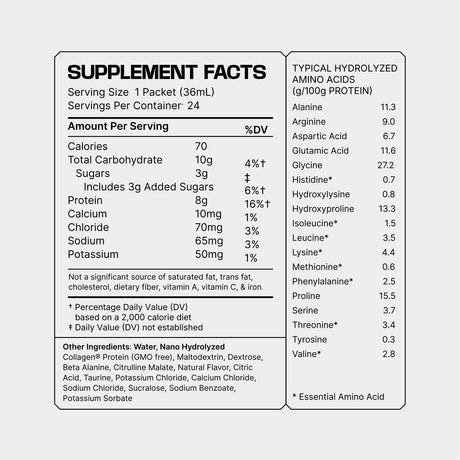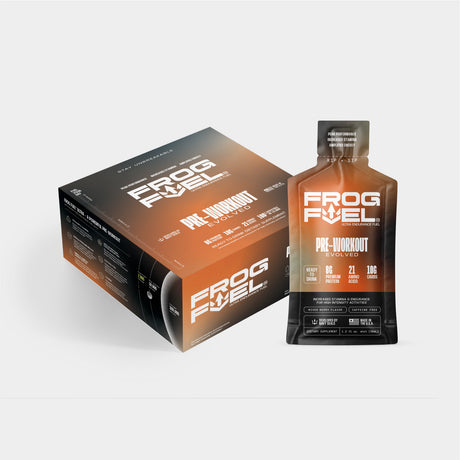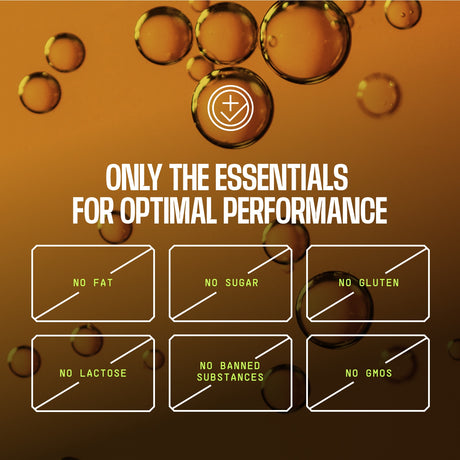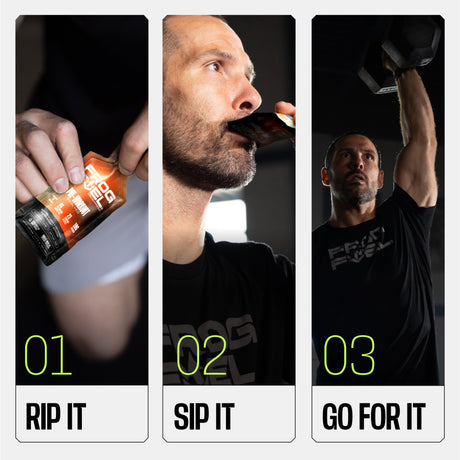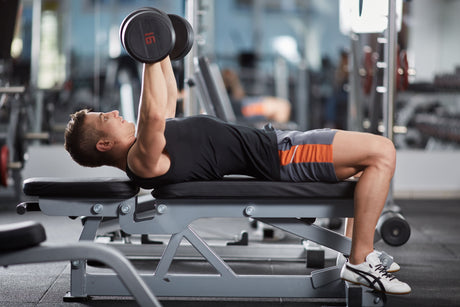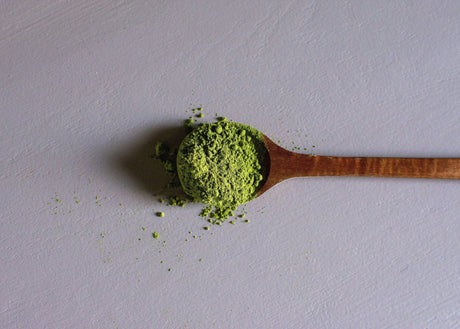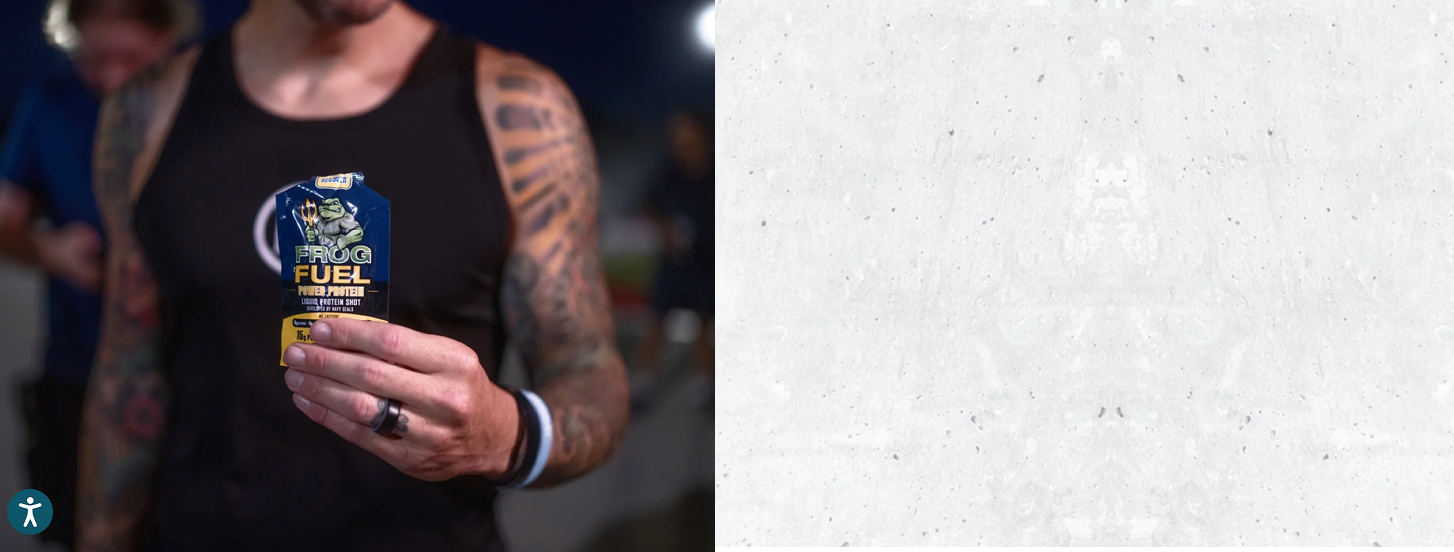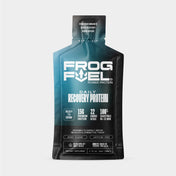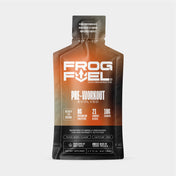Want to prevent common football injuries? Then you’d best start taking a daily collagen supplement.
How does collagen protein protect you from injury? Given that it’s the main building block in tendons, ligaments, and muscles, collagen is an essential piece of the biological puzzle - and well worth paying attention to.
In order to understand how collagen can help with injury prevention and healing, it’s important to understand what common football injuries are, and how your body naturally heals them.
Where and why do football injuries occur? And how can collagen supplements strengthen these injury-prone areas?
You may already be familiar with the names of some common football injuries, but they’re worth examining closely. This way, you can understand the body’s plan to protect and heal itself, and why collagen plays such an important part in that process.
How do common football injuries happen?
Although any misjudged movement or unexpected change of direction can tear a ligament, it will come as no surprise that the most dangerous moments during a football game are tackles.
Tackles are where most common football injuries occur. Tackles rapidly change the forces being applied to the musculoskeletal system. A ligament that was being applied in one direction suddenly has to resist a large opposing force that it simply isn’t ready for.
These ligaments are very small. An average ACL is only 1.3 inches long and 0.43 inches wide. So even though your ligaments are built and reinforced by a dense collection of strong collagen fibers, they have to resist huge exterior forces on the football field.
This jarring force can lead to tears in ligaments at the point of contact between bones. Damage to any of these ligaments is a huge setback for a football player and their team. Not only will the player need to be taken out of the game, they will also not be able to train as effectively during recovery.
The further bad news is that without regular training, endurance and fitness can be compromised too.
Now that you understand how injuries happen, let’s take a look at common football injuries so you know what to avoid. The most common football injuries overall are knee injuries, which take the brunt of the torque on the field.
What is the most common football knee injury?
The most famous and feared football knee injury is the ACL tear, which will usually sideline a player for 6-9 months.
A partial or complete tear of the ACL ligament results in severely compromised forward movement of the shinbone, which makes it one of the most devastating common football injuries out there.
Your knee is connected to your shinbone, thigh bone, and kneecap through numerous ligaments that work together to create secure attachment. To better understand common football injuries, let’s get familiar with all these ligaments:

- Anterior Cruciate Ligament (ACL): Located in the center of the knee, the ACL controls forward movement and rotation of the shinbone.
- Medial Collateral Ligament (MCL): Located on the inside of the knee, the MCL gives stability to the inside of the joint.
- Lateral Collateral Ligament (LCL): Located on the outside of the knee, the LCL gives stability to the outer knee
- Posterior Cruciate Ligament (PCL): Located in the center of the knee, the PCL prevents the shin from sliding backwards
How long does it take to recover from a common football knee injury?
Recovering from common football injuries, particularly football knee injuries, is a very personal endeavor. Based on a multitude of factors - from the severity of the tear, to how active the athlete is in their rehabilitation - recovery can be faster or slower than the guidelines offered below:
- ACL: 6 to 9 months
- MCL: 6 weeks
- LCL: 3 to 12 weeks
- PCL: 10 days
Another important factor to pay attention to regarding common football injuries is whether or not a ligament requires surgery to rehabilitate effectively. Undergoing surgery may be better for your body in the long run, but requires a longer recovery time before you can get back on the field.
So of course, it’s best to avoid injuries altogether - and collagen just might help with that.
How can collagen help a football knee injury?
Collagen protein comprises up to 75% of the dry mass of ligaments. Therefore, it follows that when a ligament tear takes place, collagen is the main material the body needs to have available to piece itself back together.
Preventing a football knee injury is a much more desirable goal than recovering from one. If your body is well-stocked with collagen supplies it may be less likely to tear in the first place.
It’s often too simplistic to think of any ligament as being “healthy” or “injured.” A ligament that is worn down bit by bit is in a weaker position to resist a stronger hit or mis-step that causes the full injury to the ligament.
A stronger, more collagen-rich ligament may have been able to withstand that hit, depending, of course, on how strong this external force is. Supplying the proper amount of collagen in ligaments acts as extra protection against injury.
If you do get injured, however, collagen can also help there. Your recovery time after injury is essentially how long it takes your body to weave its collagen protein fibers back together. Because of this, doctors commonly use collagen for wound healing.
When you provide your body with regular stores of collagen, it may help speed up your wound healing process, and help you get back on the field more quickly. Of course, any supplementation should be used in conjunction with quality rest and the advice of your doctor or physiotherapist.
Of course, collagen isn’t great for football knee injuries - it can be beneficial if you have a football ankle injury or football shoulder injury too. Let’s take a look at some other common injuries on the field.
Other common football injuries
While the knee is at the forefront of many football injuries, a football shoulder injury or football ankle injury are huge setbacks to the thousands of players who go through them each year.
The most common football ankle injury is an Achilles tendon injury.
How do tendons and ligaments differ? Ligaments connect bone to bone, and tendons connect bone to muscle.
How are tendons and ligaments similar? They’re both loaded with collagen protein.
The Achilles tendon is the largest tendon in the body, and it connects the calf muscle to the heel bone. The tendon is a major player in running motions, and knowing what you can do to prevent running injuries is important for all young football players.

Just like with the ligaments in your knee, the Achilles tendon has a lot of demands placed on it when running, changing direction, and taking tackles. Without due care and attention, this tendon is at risk of tears that can bench a football player for six to eight weeks.
Another common football injury is a labrum tear, which is the most common type of football shoulder injury.
Football linemen are more prone to injury in their shoulders because of the huge forces in pushing and resisting the opposing man. Blocking naturally requires arms and shoulders reaching forward which, if forced into an unnatural angle, can tear the shoulder support network.
If you play O-Line or D-Line, make sure you’re familiar with what’s going on in this diagram.

Source: Orthopaedic Associates of St. Augustine
The labrum is a type of cartilage found in the shoulder joint. It cushions the ball end of the humerus bone as it fits into the shoulder socket. This cushion provides shock absorption and helps to keep the arm in the socket.
Very strong external pressures on the football field during tackles or aggressive blocking can cause torn labrums, where this cartilage no longer attaches to the bone. It can take four to six weeks for the body to reattach a torn labrum, and another four to six weeks for it to be strong again.
Take a guess which protein the labrum is made from. That’s right, densely packed fiber bundles of collagen give the labrum strength and rigidity.
All the reasons why collagen prevents and aids recovery to knee ligaments also applies to the achilles tendon and the labrum.
Think of collagen as the go-to protein that the body uses for cartilage, ligaments, and tendons. This replenishing of protein after the wear and tear of exercise is a crucial part of staying healthy - and may reduce the risk of some of the most common football injuries.
The best routine for preventing common football injuries
Even though the benefits of collagen are significant, taking collagen should only be part of a common football injury prevention routine. In addition to fueling up with collagen, young athletes should also consider proper stretching and stability routines, and healthy, balanced nutrition.
Stretching techniques
Going from first gear to top gear opens the door to injuries if your body isn’t warmed up. Gentle progression, activation, and cool-downs don’t sound glamorous, but they can make all the difference on the field.
Stretching regularly throughout the day will loosen your muscles and prime them for work.
Tight muscles and ligaments will snap, not flex, under pressure. We encourage athletes to think beyond the obvious big muscle stretches and show some care to smaller muscles too. Wrists, ankles, and neck muscles also need to be loosened, and taking care of them may reduce common football injuries.
Good, balanced nutrition
Athletes need a larger quantity of protein than non-athletes because of the higher demand for protein replenishment during football conditioning drills and games.
Nutrition isn’t only about protein, however. Energy comes from carbohydrates, so every high school football nutrition plan should be loaded with a variety of complex carbohydrate sources. Keeping a baseline of useful fats for energy storage also helps keep the body happy and healthy.
Finally, don’t overlook vitamins and minerals. Vitamin C is a cofactor in collagen synthesis, so make sure that your daily protein shake can be supported by some fruit or vegetables.
Taking a collagen supplement
Taking collagen before you work out is a fast and convenient way to fuel your body with the proteins that it is going to need once the exercise grind really kicks in.
Collagen can be incredibly beneficial for your health. It is not only used in ligaments, tendons, and cartilage, but in your muscles, skin, organs, and blood vessels too.
The list of collagen benefits for men and women, both athletes and non-athletes, is long, and giving yourself extra stores of collagen can impact your health in numerous ways.
That being said, not all collagen products are created equal, and when it comes to injury prevention, you want to make sure you’re getting the best protection.
The best collagen to prevent common football injuries
If you want to ensure you’re getting the most out of your collagen supplement, you want to look for a trusted brand that uses hydrolyzed collagen. A hydrolyzed supplement has undergone the process of hydrolysis to break the protein molecules down into more easily digestible pieces.
Better yet, you can look for a non-hydrolyzed product, which has gone through the process of hydrolysis multiple times to make it extra bioavailable for you. Frog Fuel liquid collagen protein is one such nano-hydrolyzed product that is guaranteed to fully absorb in 15 minutes or less.
In addition to being nano-hydrolyzed, Frog Fuel collagen protein comes in convenient single-serve pouches that don’t need to be mixed with anything before consuming. This makes them easy to use both on and off the field.
A regular consumption of Frog Fuel liquid collagen protein may play a major role in helping you prevent (and heal) some of the most common football injuries around.


